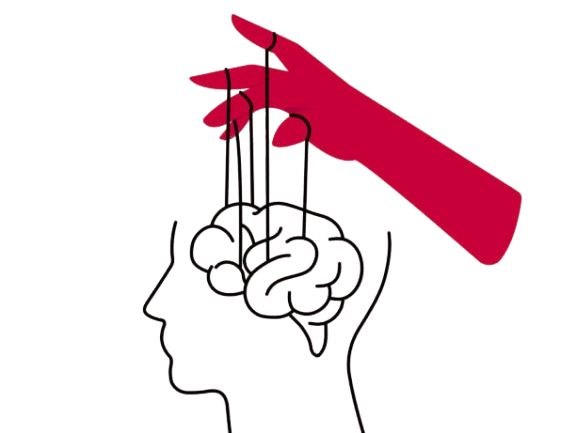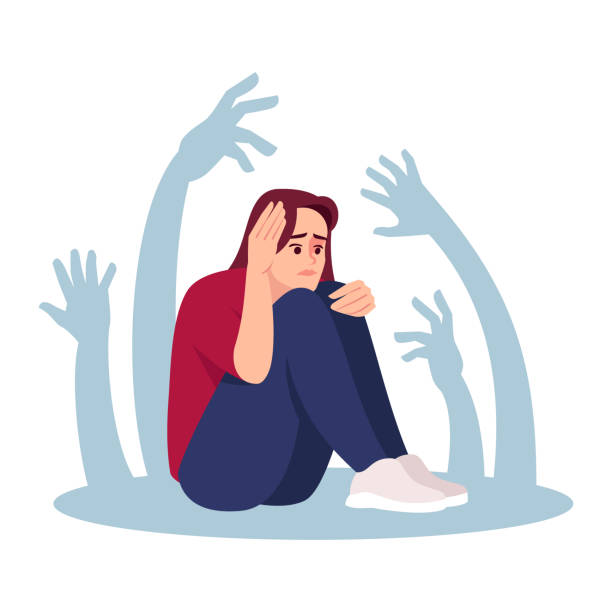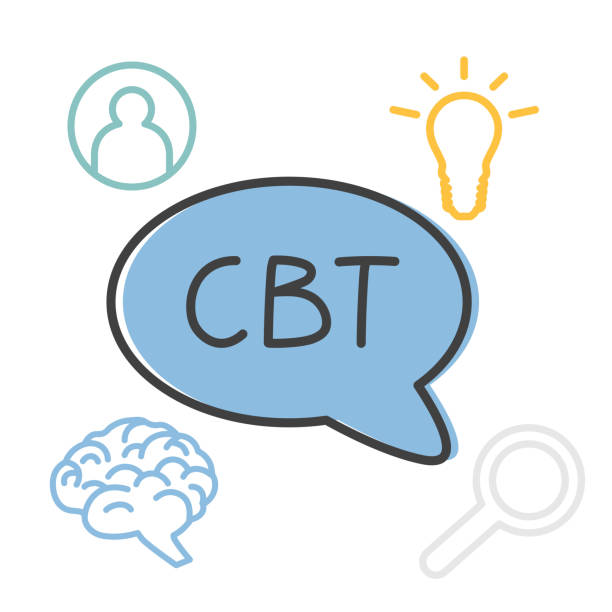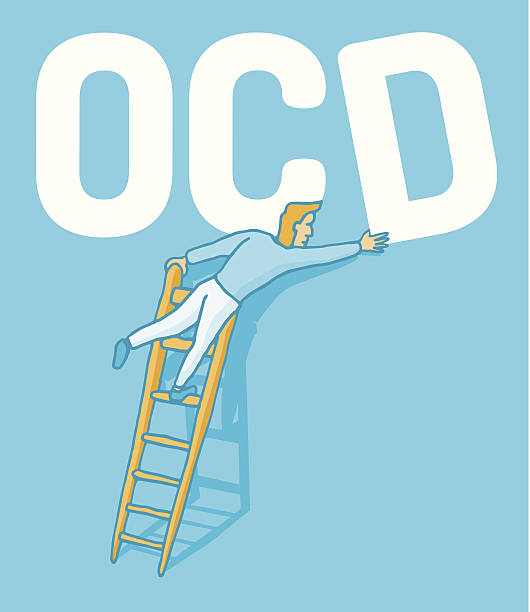How Psychological Abuse Changes Your Brain: The Science Behind the Trauma

Psychological abuse doesn’t leave visible scars—but its impact runs deep, often altering the very way your brain works. Whether it comes from a partner, parent, boss, or anyone in a position of power, emotional abuse chips away at your sense of reality, safety, and self-worth. The truth is: your brain is physically and chemically affected by chronic psychological abuse. Understanding these changes can help validate your experience, reduce self-blame, and point you toward healing. What Is Psychological Abuse? Psychological (or emotional) abuse involves patterns of manipulation, control, belittling, gaslighting, intimidation, and isolation. Unlike physical abuse, it’s subtle and insidious. Victims may not even realize they’re being abused—until their mental health begins to deteriorate. Common forms include: · Constant criticism or humiliation · Gaslighting (making you doubt your own reality) · Withholding affection or approval · Threats and guilt-tripping · Controlling your time, choices, or relationships Over time, this kind of abuse rewires your brain to survive, not thrive. How Psychological Abuse Affects Your Brain Here are some of the most significant neurological and psychological impacts of long-term emotional abuse: 1. The Amygdala: On High Alert The amygdala is your brain’s fear center. In an abusive environment, it becomes hyperactive, constantly scanning for danger. · You become hypervigilant—even when the threat is gone. · Your brain starts to overreact to perceived conflict or criticism. · Everyday interactions can feel threatening or anxiety-inducing. 2. The Prefrontal Cortex: Decision-Making Declines The prefrontal cortex handles reasoning, judgment, and impulse control. Chronic abuse disrupts its function. · You may feel “foggy,” indecisive, or unable to trust your own judgment. · It becomes harder to plan, problem-solve, or see situations clearly. · You might second-guess everything—even your own feelings. 3. The Hippocampus: Memory Gets Foggy The hippocampus, which manages memory and learning, shrinks under prolonged stress. · You might struggle with short-term memory or recalling details. · Gaslighting only worsens this, making you doubt what you remember. · You may feel like your brain just doesn’t “work” the way it used to. 4. The HPA Axis: Stuck in Survival Mode The hypothalamic-pituitary-adrenal (HPA) axis controls your stress response. In abusive environments, it becomes dysregulated. · Your body floods with cortisol (the stress hormone), sometimes daily. · This can lead to anxiety, depression, fatigue, sleep problems, and illness. · You might feel “numb,” disconnected, or always on edge. Why You Might Feel “Broken” (But You’re Not!) People in emotionally abusive situations often blame themselves: “Why can’t I think clearly?” “Why do I stay?” “Why do I feel so anxious and lost?” The answer isn’t weakness—it’s neurobiology. Your brain is reacting exactly the way it’s designed to under chronic stress and threat. This is trauma. This is real. Can the Brain Heal After Psychological Abuse? Yes. The brain is neuroplastic—it can adapt and rewire itself with time, safety, and support. Recovery is possible. Ways to begin healing: · Journaling to reconnect with your voice and identity · Mindfulness and nervous system regulation (breathwork, grounding, yoga) · Supportive relationships that feel safe, seen, and validating · Rest, nutrition, and body care—because healing is physical too · Starting therapy with a therapist trained in psychological abuse recovery You don’t need to rush. You just need to know this: You’re not crazy. You’re not alone. And your brain can heal. Psychological abuse isn’t “just emotional.” It changes how your brain works, how you see the world, and how you see yourself. But those changes are not permanent. With the right support, your brain can relearn safety, rebuild trust, and return to clarity and calm. What was damaged can be restored. You deserve that healing. And you’re not broken—you’re surviving. Click HERE to schedule an appointment and start your journey towards healing from psychological abuse!
Living with Emetophobia: When the Fear of Vomiting Takes Over

First, if you live with emetophobia, you should be very proud of yourself for clicking on this blog post. I understand how hard it is to interact with any reminder of the possibility of vomiting. We all have fears. Some are common—like spiders or heights. But what if your greatest fear was inevitable? For people with emetophobia, the fear of vomiting isn’t just unpleasant—it’s intrusive, overwhelming, terrifying, and can impair your life in big and small ways. Though it’s one of the lesser-known phobias, emetophobia affects many people and doesn’t discriminate. And yet, because it’s rarely discussed, those who struggle with it often suffer in silence. This blog post aims to shed light on what emetophobia is, how it may impact your daily life, and what steps you can take toward healing. What Is Emetophobia? Emetophobia is an intense, irrational fear of vomiting, seeing someone else vomit, or even feeling nauseated. It can manifest in many ways: · Fear of being sick in public · Avoidance of people who appear or are ill · Avoidance of places associated with throwing up or of feeling nauseous · Avoiding pregnancy, travel, alcohol, restaurants, or social situations · Intrusive thoughts about contamination and getting sick · Panic over stomach sensations, nausea, or even someone talking about feeling ill or vomiting · Obsessive handwashing or food-checking for fear of food poisoning Emetophobia is more than the dislike or discomfort experienced when vomiting —it’s a specific phobia that triggers panic, obsessive thoughts, and restrictive behaviors. How Emetophobia Impacts Daily Life The effects of emetophobia can be deeply disruptive and widespread: · Social limitations: Fear of someone throwing up in public or concerns about contracting an illness may lead to isolation. · Food issues: Avoidance of certain foods, restaurants, or eating in general, which can lead to weight loss or disordered eating. · Health anxiety: Minor stomach sensations can spiral into obsessive worry or panic attacks. · Daily decisions: Travel, dating, having children, or even working in public spaces can feel very overwhelming or even impossible. Emetophobia often overlaps with anxiety disorders, obsessive-compulsive disorder (OCD), and panic disorder, and it can drastically reduce a person’s quality of life. Where Does It Come From? If you suffer with emetophobia (or any other irrational fear), you’ve undoubtedly been asked questions like, “did you have a bad experience when throwing up that led to this fear” or “don’t you know that you feel better after you throw up”? These questions can leave you feeling like you have to justify, argue, defend, or explain yourself and your fear. Emetophobia often begins in childhood or adolescence. Some common triggers include: · A traumatic vomiting experience (either personal or witnessed) · High anxiety or sensitivity to loss of control · Overexposure to sickness in childhood (e.g., a parent with health anxiety) · Association of vomiting with shame, embarrassment, or danger Over time, the brain links vomiting with intense fear and begins to interpret nausea or stomach sensations as threats, creating a loop of fear and avoidance. Can Emetophobia Be Treated? Yes. The good news is that emetophobia is highly treatable with the right support. You don’t have to suffer any longer! Some effective treatments include: · Cognitive Behavioral Therapy (CBT): Helps challenge irrational thoughts and reduce avoidance behaviors. · Exposure therapy: Gradual, controlled exposure to fear triggers (e.g., saying the word “vomit,”, looking a photos or watching videos of someone talking about or actually throwing up) helps desensitize the brain. · Mindfulness & grounding techniques: Learn to manage anxiety and reduce panic around bodily sensations. · Medication: In some cases, SSRIs or anti-anxiety meds may help manage symptoms. Most importantly, you don’t have to face it alone. If you have emetophobia, your fear is real. Your experience is valid. And your life doesn’t have to be ruled by it. You deserve support, understanding, and a life not dictated by fear. Whether you’re newly diagnosed or have lived with it for years, remember that recovery is possible—and it starts with knowing you’re not broken. You’re human. Click HERE to schedule an appointment and start your journey towards freedom from emetophobia!
How Therapy Can Ground You in an Unstable World

The world feels heavy right now. Between global crises, social unrest, political division, economic uncertainty, and climate anxiety—not to mention the personal struggles we carry—many people are feeling overwhelmed, burned out, and emotionally exhausted. If you’ve found yourself thinking, “I can’t take one more thing,” you’re not alone. In times like these, therapy isn’t just about treating mental illness. It’s about building emotional resilience, clarity, and connection when everything else feels uncertain. Why the World Feels So Unsafe Right Now We’re living in what psychologists call a “chronic stress environment.” That means your nervous system is constantly processing unpredictability, loss, or threat. This can lead to: · Anxiety or panic · Trouble sleeping or focusing · Emotional numbness or detachment · Irritability, hopelessness, or burnout · Feeling like you’re in survival mode every day And while we can’t control the world around us, we can create stability and safety within ourselves. That’s where therapy comes in. How Therapy Helps in a Chaotic World 1. Therapy gives you a place to process what you’re carrying. When everything feels like too much, therapy becomes a space where you can put the weight down. You don’t have to minimize your feelings or justify your stress. A trained therapist helps you process grief, fear, anger, or numbness without judgment. 2. Therapy teaches you how to regulate your nervous system. Through mindfulness, grounding exercises, breathwork, and cognitive strategies, therapy helps you calm your body—even when the outside world is chaotic. Over time, your stress response becomes more manageable. 3. Therapy helps you reconnect with what you can control. You can’t fix everything. But you can control your boundaries, your reactions, your self-care, your values, and your voice. Therapy helps you reclaim power where it actually exists. 4. Therapy offers consistent connection. In a fragmented world, therapy can be one of the few stable, predictable relationships in your week. It’s a space where you’re seen, heard, and supported.. 5. Therapy helps you rewrite your inner dialogue. When the world is unkind, your self-talk can become harsh too. Therapy helps replace self-criticism with self-compassion, reminding you that strength doesn’t mean silence—it means staying soft in hard times. Who Is Therapy For? Not just for people in crisis. Therapy is for: · The emotionally exhausted · The highly sensitive · The burned-out parent or caretaker · The overachiever who’s barely hanging on · The activist feeling hopeless · The person who seems “fine” but feels empty inside Therapy is for anyone who wants to feel more like themselves again. You Deserve Support We’re not meant to do life alone—especially not during uncertain, overwhelming times. You don’t have to wait until you’re falling apart to seek help. You’re allowed to want more peace, more clarity, more connection, and more control over your inner world. Therapy doesn’t make the world less chaotic. But it does help you feel more grounded in the storm. Because healing isn’t about avoiding pain—it’s about learning how to hold it, without losing yourself. Click HERE to schedule an appointment and start feeling lighter and happier in this chaotic world!
A New Way to Treat OCD: How I-CBT Helps

For many people living with Obsessive-Compulsive Disorder (OCD) treatment can be a long and frustrating journey. Exposure and Response Prevention (ERP) is often considered the gold standard, but it doesn’t work for everyone. Some find it too distressing, others see little improvement. That’s where Inference-Based Cognitive Behavioral Therapy (I-CBT) comes in—a promising and compassionate alternative approach. What Is OCD, Really? OCD is more than just liking things neat, repetitive handwashing, or checking and rechecking the stove. It’s a cycle of intrusive, unwanted thoughts (obsessions) and repetitive actions or mental rituals (compulsions) that are done to reduce the intense anxiety (distress) those thoughts cause. Example: · Obsession: What if I ran someone over and didn’t notice? · Compulsion: Replaying the memory, driving back to check, seeking reassurance. This loop can feel impossible to escape. And while ERP helps many people confront their fears without engaging in compulsions, it doesn’t always address why the obsessions feel so believable in the first place. I-CBT shifts the focus away from behavior and toward how you interpret reality—specifically, how doubt takes hold and turns imagination into “evidence.” Instead of asking you to face your fears head-on (like ERP), I-CBT helps you understand why your mind created the obsession in the first place and teaches you to break the faulty reasoning behind it. How I-CBT Works OCD isn’t about what is actually happening—it’s about what might happen, based on imagined or inferred scenarios. The OCD brain over-relies on imagination and possibility. It takes things like facts, hearsay, and personal experience out of context and applies them to the here-and-now. I-CBT helps you: 1. Identify the moment of doubt – When you begin to distrust your senses or logic. 2. Recognize the faulty inference – The “what if?” or “maybe” story your brain creates (e.g., What if the door didn’t lock, even though I saw it lock? Or Maybe I harmed someone and don’t remember). 3. Challenge the narrative – Learn to spot how OCD uses unlikely or irrational reasoning. 4. Rebuild trust in your senses and self – Return to the real evidence and stay grounded in reality. What Makes I-CBT Different from ERP? ERP I-CBT Focuses on reducing compulsions Focuses on the reasoning behind obsessions Involves exposure to feared thoughts/situations Involves cognitive restructuring without exposure Can feel emotionally intense or triggering Often gentler and less distressing Works through behavior Works through thought patterns Sometimes people even combine the two approaches for more comprehensive care. Who Is I-CBT For? I-CBT may be especially helpful for you if: · You have “pure O” OCD (mostly mental rituals and rumination…the obsessive thoughts are the compulsion to reduce the distress you feel) · ERP hasn’t worked or feels overwhelming · Your OCD is rooted in chronic doubt, “what ifs,” and “maybes” and imagined scenarios · You want a more cognitive, less exposure-based approach What Does Treatment Look Like? I-CBT is typically delivered in individual or group therapy sessions by a trained clinician. It may involve: · Mapping the OCD story · Learning about inference-based doubt · Practicing real vs. imagined thinking · Applying techniques to current and future obsessions Many people begin to experience relief in as little as 12–20 sessions, though this varies. OCD can be stubborn—but it’s not untreatable. If traditional therapies haven’t worked for you, Inference-Based CBT offers a fresh perspective that gets to the root of how your mind creates—and sustains—obsessions. By targeting faulty reasoning rather than just behaviors, I-CBT helps you step out of the OCD trap and return to a grounded, confident relationship with reality. You don’t have to live at the mercy of your thoughts. Recovery is possible—and I-CBT may be the next step you’ve been waiting for. Click HERE to schedule an appointment and start your journey towards freedom from OCD!
Understanding OCD: A Guide to Different Types and What They Mean

Obsessive-Compulsive Disorder (OCD) is often misunderstood. Many people think it’s just about being neat, liking things a certain way, or fear of germs. But OCD is far more complex and varied. It can look very different depending on the person. What Is OCD? OCD is an anxiety disorder characterized by obsessions (intrusive, unwanted thoughts, images, or urges) and compulsions (repetitive behaviors or mental acts performed to reduce the distress caused by obsessions). People with OCD often feel trapped in cycles of fear and ritual, which can severely impact their daily life. Common Types of OCD 1. Contamination OCD · Obsessions: Fear of germs, dirt, illness, or contamination · Compulsions: Excessive washing, cleaning, avoiding certain places or people This is one of the most widely recognized forms of OCD. The fear is about getting sick or spreading germs, leading to compulsive cleaning or avoidance behaviors. 2. Checking OCD · Obsessions: Fear of causing harm by forgetting to do something (e.g., locking doors, turning off appliances) · Compulsions: Repeatedly checking locks, stoves, appliances, or safety measures The compulsions aim to prevent feared accidents or disasters, but the reassurance is only temporary, leading to endless checking. 3. Pure O (Primarily Obsessional OCD) · Obsessions: Intrusive, distressing thoughts without obvious compulsions · Compulsions: Mental rituals like rumination, silent repeating, counting, or reassurance seeking Despite the name “Pure O,” compulsions are still present but often mental rather than physical. These obsessions often involve taboo or violent thoughts, causing intense anxiety. 4. Symmetry and Ordering OCD · Obsessions: Need for things to feel “just right” or symmetrical · Compulsions: Arranging, ordering, counting, or repeating actions until the feeling is “perfect” This type involves discomfort with disorder or asymmetry, leading to time-consuming rituals. 5. Harm OCD · Obsessions: Fear of harming oneself or others unintentionally · Compulsions: Avoidance, mental reviewing of actions, seeking reassurance, or neutralizing thoughts with opposite actions People with harm OCD are often terrified of their own thoughts, even though they have no intention of acting on them. 6. Religious or “Scrupulosity” OCD · Obsessions: Fear of moral or religious transgressions, sinning, or blasphemy · Compulsions: Excessive praying, confessing, seeking forgiveness, or mental reviewing of thoughts and actions This form is rooted in excessive concern about religious or moral correctness. Why Does Understanding the Type Matter? OCD looks different for everyone, and understanding your type can: · Help you find the right treatment approach · Reduce shame by knowing you’re not “weird” or alone · Guide therapists in targeting your specific obsessions and compulsions · Improve coping strategies tailored to your experience Treatment Approaches for All Types · Inference-Based CBT (I-CBT): Useful for all types of OCD by targeting obsessive doubts. · Exposure and Response Prevention (ERP): The gold standard, involves gradually facing fears without performing compulsions. · Cognitive Behavioral Therapy (CBT): Focuses on changing thought patterns that fuel OCD. · Medication: SSRIs can help manage symptoms. · Support Groups: Connecting with others who understand can reduce isolation. OCD is a complex, multifaceted disorder with many faces. If you or a loved one struggle with obsessive thoughts or compulsive behaviors, know that help is available—and recovery is possible. Understanding your unique OCD experience is the first step to reclaiming your life. Click HERE to schedule an appointment and start your journey towards healing from OCD!
